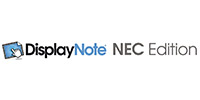
 Download PDF
Download PDF
English |
pdf | 1.3 MB
|
NEC Display Solutions Client Installation Education DISPLAYNOTE IN PRIMARY SCHOOL IN MUNICHHAVING FUN LEARNING THROUGH TECHNOLOGYIn the classroom of a Munich primary school, children learn with Tablets and projectors. Working together as a group, what keeps the wheels rolling in business and society, is often unusual in schools. Modern teaching approaches and the latest technology help teachers to promote social training for pupils. Ludwig Maximilian University, LMU of Munich is carrying out research as to what they should pay attention to there. In the primary school in the Haimhauserstraße in Munich, learning is fun. Here children do not have to struggle with chalk on the blackboard, but can instead immerse themselves with their iPads in all sorts of topics and present their !ndings to their friends on a large projector, which can even be controlled using a pen. 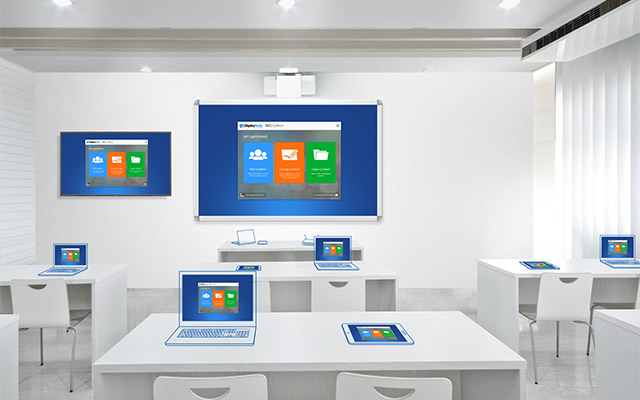
In this venerable school the most modern classroom in the city has been set up by the LMU Munich. Dr Kirch, Senior Lecturer at the Department of Education, is investigating here how technology can be better integrated into the classroom. “The basic principles of cooperative learning are well researched,” Dr Kirch reports. The Canadian educator Norm Green could for example prove in practice that the basic principle of cooperative learning produces extremely good results with the three phases Think, Pair and Share. The ChallengeThe children are given a question to answer or a task to perform and !rst of all occupy themselves, Thinking it through on their own. In the Pair phase, the students share their !ndings with individual classmates. In this way they can re!ne their thinking and exchange information on the issue discussed. In the Share phase, small groups !nally present their findings to the group as a whole. The others here have the opportunity to reconsider their own solution or alternatively offer their own solutions to everyone. “The results of this method are very good and in many ways superior to chalk and talk techniques,” Dr Kirch reports. 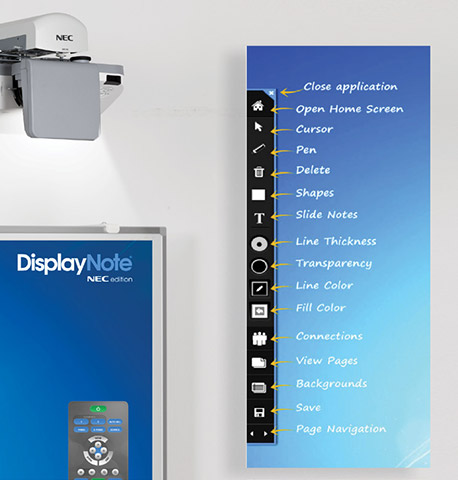
The first result of his investigation is that Tablets can be integrated in a very positive fashion in this process. No wonder that the manufacturers of teaching materials recognised this trend and rely ever more upon digital content. Even primary school children can operate the devices intuitively and cope very well with them. Whenever Dr Kirch tells a story to the pupils of the primary school in the Haimhauserstraße and asks them to note down the most important words in it, he has their full attention. One of the children may dictate this later into the device. Speech recognition converts the language remarkably accurately into writing. Another pupil checks the work. The latter may correct any typing errors. But considerably more complex units of instruction can be usefully supported with a Tablet. Functions for easy writing, drawing and painting are what make the devices with Android or iOS operating systems ideal tools even for the youngest age group. What has been missing until now was a crossplatform solution with which content created by the pupils can be easily shared and presented. Along with NEC Display Solutions Dr Kirch is carrying out research into the potential of a newly developed solution, with which this is possible. Unlike with most similar solutions this runs on all major operating systems and equally with Android and iOS devices. The NEC SolutionTablets, as well as PCs, laptops and smartphones can be networked via a WLAN router to the teacher’s PC. 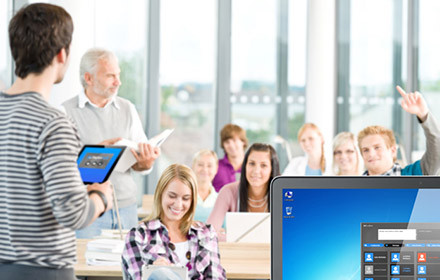
The same software runs using a uniform user interface for all these devices. This whiteboard software is therefore also available to each pupil. They can use this to receive, link to and save the teacher’s instructions on the Tablet according to their own liking with their own comments. All marking and labelling elements offered by traditional whiteboards or PDF editing programs can be found here too. As these tools only appear as a virtual slide of the material presented, it does not matter in which format this output appears. Teachers therefore have the freedom to choose whether they should rely on their own PowerPoint files or on special learning software. Accordingly they do not have to completely rework their digital instruction materials from scratch. With the assistance of this solution the learners can also become the presenters themselves. One click on the sharing option of the teacher is enough for their own work to appear on the screen of an interactive projector. In addition the projector can also be controlled completely using the software. The teacher has thus full control and can, for example, freeze the image or change the input, even with the loss of remote control. The projector is also suitable for 3D projects. Such complex processes as the cell structure of a plant or the individual elements of the human ear can therefore be represented using optimal dimensional techniques. Thus, they are vastly superior to their 2D counterparts - be it the classic book or a projection. The producers of teaching materials have recognised the trend and offer ever more and more topics with relevant content from all subject areas. This may also be presented by the teacher or executed by the pupils themselves. The Result“Of course the Share phase plays a large role”, Dr Kirch explains. The content developed here is controlled for all, presented, compared, and expanded upon by the teacher. “Despite the many advantages of a Tablet, the children here like the larger presentation on the projector. Eventually many topics can only be presented really well using this type of presentation”. 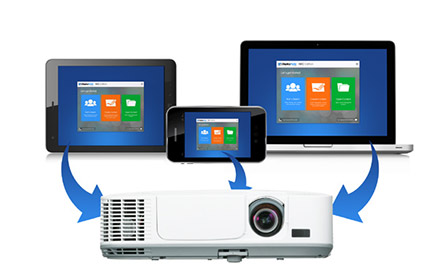
“As a technology provider, we cannot simply reduce our research to electronics and technical specifications. As an innovative company we have to dovetail closely with our research, when it comes to further developing such scenarios for future use” explains Ulf Greiner, Product Line Manager Business Projectors at NEC Display Solutions Europe. “In schools, universities and other training facilities technological requirements are extremely high. From there, we get valuable feedback that "ows directly into the development of our products”. Important in the development of the total solution for NEC was primarily a system with the same functions crossing system boundaries. This includes, for example, the possibility that touch capabilities of the iPad screen can also be mapped onto the interactive projector and that the user there enjoys the same user experience as on the Tablet. |